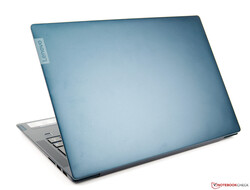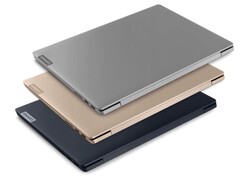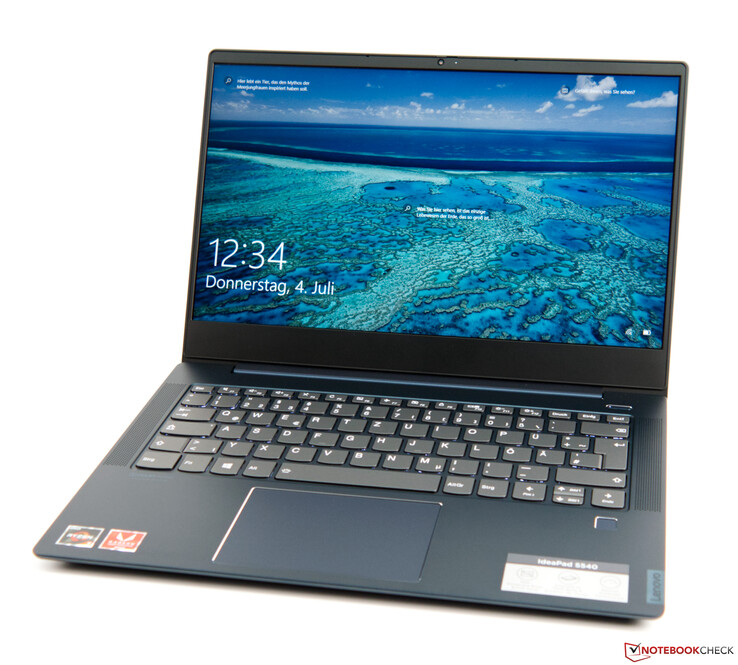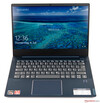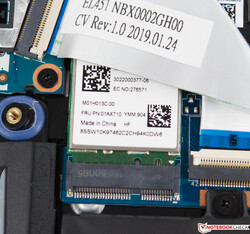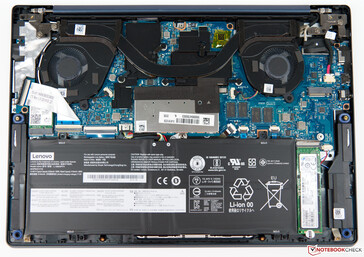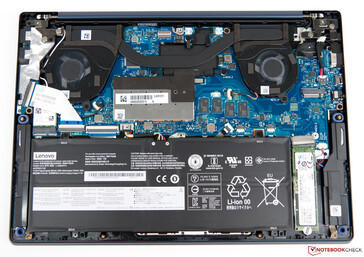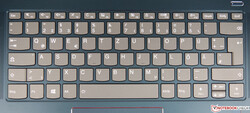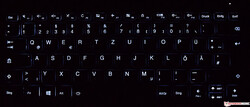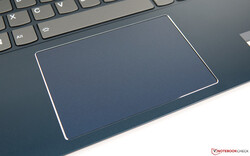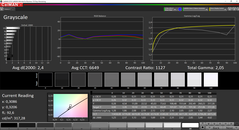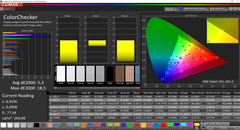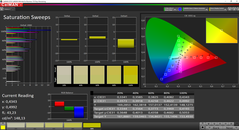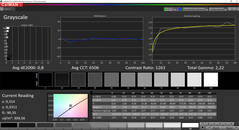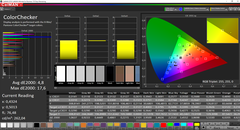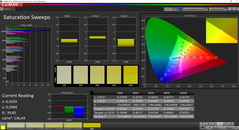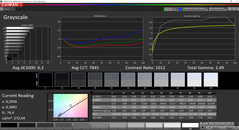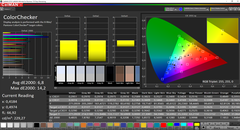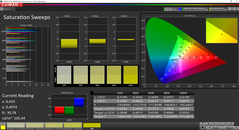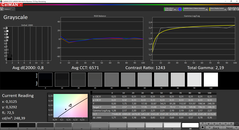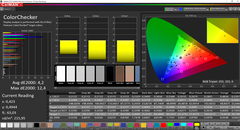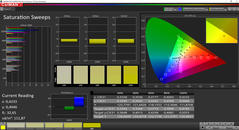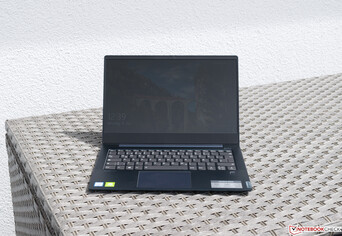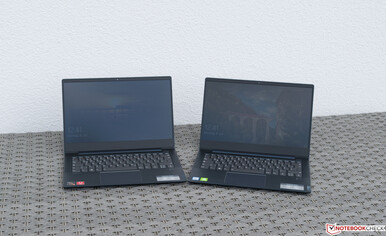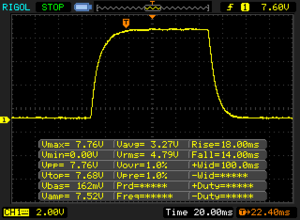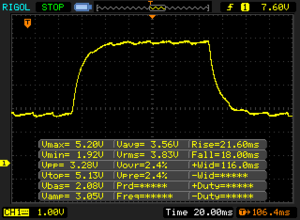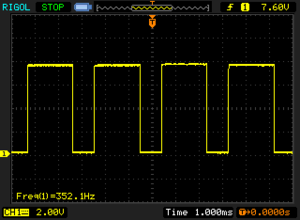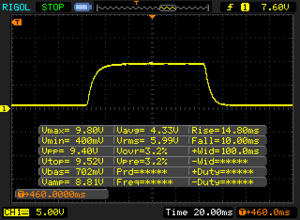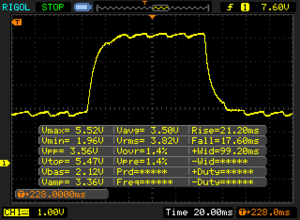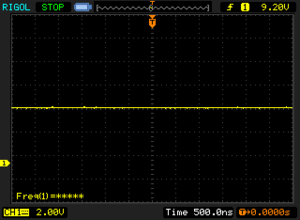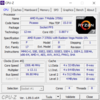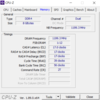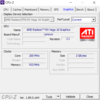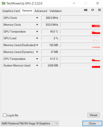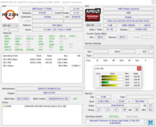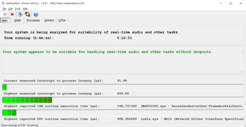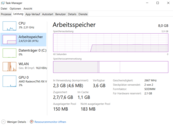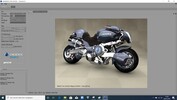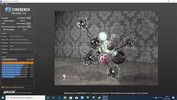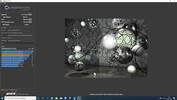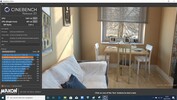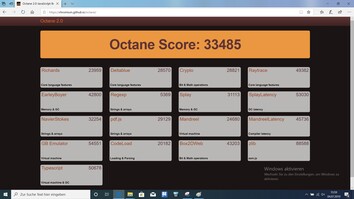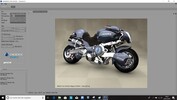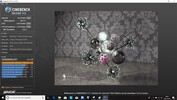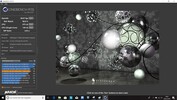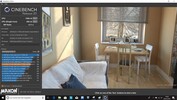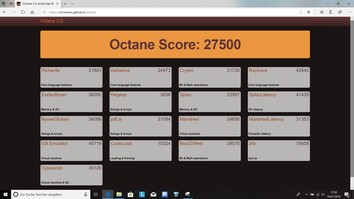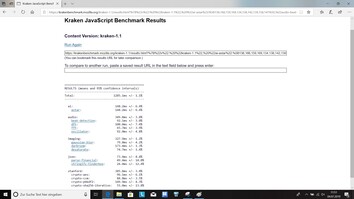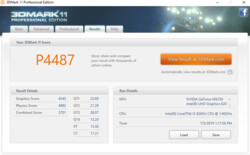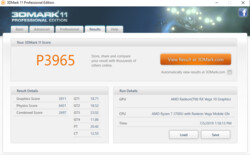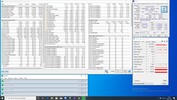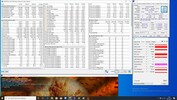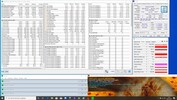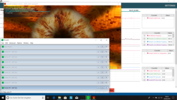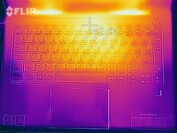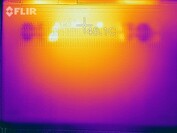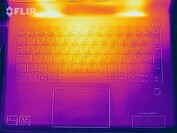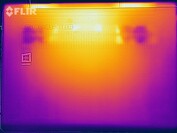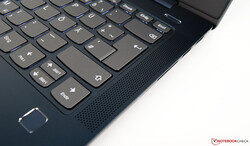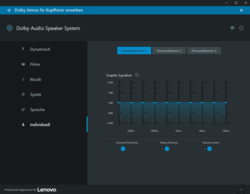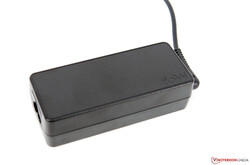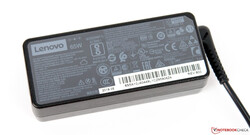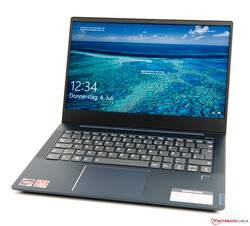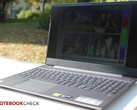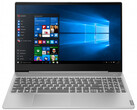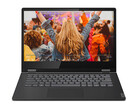Lenovo IdeaPad S540 Laptop Review: AMD or Intel? Lenovo gives consumers the choice and we compare both

Sub-€1,000 ($1,121) multimedia laptops have become ubiquitous by this point. Lenovo has attempted to distinguish the IdeaPad S540 from the chasing pack by offering the 14-inch laptop in two distinct variants. The IdeaPad S540-14IWL comes with an Intel CPU and NVIDIA GPU, while the IdeaPad S540-14API has an AMD APU and relies on integrated graphics instead of a dedicated solution. We have both in for testing to see whether these differences have any practical effect for the consumer.
Lenovo equips the IdeaPad S540-14IWL with a Core i5-8265U and GeForce MX250 GPU, which should combine to provide the 14-inch multimedia laptop with enough power even for some light video editing. By contrast, the IdeaPad S540-API comes with only a Ryzen 7 3700U APU, which integrates a Radeon RX Vega 10 GPU. The RX Vega 10 should offer more graphics performance than other integrated solutions such as Intel’s UHD Graphics 620 though. It is worth keeping in mind that the Ryzen 7 3700U and RX Vega 10 share their thermal design power (TDP) whereas the Core i5-8265U and GeForce MX250 do not. We will cover how this affects things in the Performance section of this review.
Both have 8 GB of DDR4 RAM, along with 512 GB of NVMe SSD. Likewise, they both come with a 14-inch IPS display that operates natively at 1080p with a matte finish.
Our review units are both student deals, making them cheaper than if you were to buy an equivalent configuration at MSRP. The S540-API, for instance, costs €749 (~US$840) through CampusPoint, but it retails for €799 (~$896). The S540-IWL is slightly cheaper at €699 (~$787), although this does not come with an OS pre-installed. Exact pricing for the S540-IWL is currently not available, although we suspect that it will cost about as much as its AMD powered sibling.
We shall be comparing the two S540 models against each other throughout this review. We will also pit our two review units against the ASUS VivoBook 14, HP Pavilion 14 and IdeaPad S340.
Case
The S540-14IWL and -14API are identically designed and come in a choice of three colours. Lenovo currently sells the S540 in dark blue, grey a sand-esque tone. Our review units are both dark blue, for reference.
Lenovo has decked the S540 in an aluminium case that looks elegant while also being sturdy. We can twist the chassis slightly if we apply a lot of pressure, but this should not be a problem in daily use. Likewise, we can cause the case to bow, but only if we press hard. The base plate and display lid are rigid too. We cannot get the display to deform either, which is good. Only the front of the display is not made of aluminium, with Lenovo opting for plastic instead.
Overall, our review units look premium, with their rounded corners adding to this aesthetic. The aluminium design reinforces this impression too, although the finish is prone to picking up fingerprints. We also like the narrow bezels, which give the S540 compact dimensions.
Our only gripe is with the hinges. On the one hand, they are tight enough to keep display teetering to a minimum, but they also prevent the device from being opened with one-hand. This is not a big issue in daily use, but it does reduce the premium feel of the device somewhat. The S540 does not have a maintenance flap either, but we shall cover this in greater detail in the Maintenance section of this review.
Size Comparison
The S540 weighs 1.4 kg (~3.1 lb), making it at least 100 g (~3.5 oz) lighter than all our comparison devices. The S540-14IWL is a few grams heavier than its AMD powered sibling, but this is only because of its dedicated GPU and additional cooling that it requires. The devices have identical dimensions though.
The VivoBook 14 is slightly more compact than the IdeaPad, but our review units are still pleasingly small at 32.3 x 22.7 cm (~12.7 x 8.9 in). Additionally, they are comparatively slim at just 15.9 mm (~0.63 in). By contrast, our comparison devices are between 2 mm and 3.1 mm (~0.08 - 0.12 in) thicker than our review units.
Connectivity
The S540 has several ports, although there are omissions that prevent it from being futureproofed for the next few years. We like that Lenovo has included a USB 3.1 Gen1 Type-C port, but it is a shame that it does not support DisplayPort or Thunderbolt 3. Likewise, the device has only an HDMI 1.4b port, which limits to outputting in a maximum of 4K at 30 FPS. Moreover, having two USB 3.1 Gen1 Type-A ports gives the device added flexibility, but we would have preferred a second Type-C port over the barrel-style power connector. Still, we will always welcome a full-sized SD card slot. The S540-14IWL and -14API have the same ports, for reference.
SD Card Reader
Our reference Toshiba Exceria Pro SDXC 64 GB UHS-II SD card protrudes slightly from the side of our review units, but we were pleased to see it operating at USB-3 speeds. The two S540 variants are streaks ahead of the HP Pavilion 14 and VivoBook 14 here, whose card readers operate on the slower USB 2.0 standard.
Communication
Oddly, Lenovo has equipped our review units with different Wi-Fi modules. Both support Bluetooth 4.2, but the Intel Wireless AC 9560 in the S540-14IWL is between two and three times as fast as the Realtek 8821CE in the S540-14API depending on the test. Fortunately, you can switch the Realtek 8821CE for a better Wi-Fi card if you own the S540-14API. The S540 does not have an RJ45 Ethernet port, but you can connect one via a USB adapter should you need a wired connection.
We should also point out that Wi-Fi crashed on the S540-14API during our tests. This occurred while we tested its sibling too, which encountered no such problem. Hence, we can rule out a network issue. Wi-Fi worked against following a restart, so we suspect that this is a driver issue.
Security
The S540 is not a business laptop, but security features such as fingerprint scanners and IR cameras have been increasingly making their way to consumer laptops. Lenovo has included a fingerprint scanner, which sits below the keyboard, and a webcam cover. The former is Windows Hello certified. Lenovo has also included a Trusted Platform Module (TPM) 2.0, but Microsoft requires all OEMs to do this if they plan to sell the device with Windows 10 pre-installed.
Accessories
The accessories included with the S540 are sparse at best. Our review units arrived with just a 65-W power supply and some set-up instructions along with the mandatory safety and warranty information.
Maintenance
The S540 does not have a maintenance cover, so you must remove the bottom plate to access any internal components. Lenovo secures the bottom plate to the frame with several screws and retaining clips, the latter of which we would recommend prying away with a flat plastic tool such as a spudger. The S540-14IWL and -14API have remarkably similar layouts considering that one has a dedicated GPU that should theoretically require additional cooling. Lenovo has equipped the devices with slightly different heatsinks, but they are broadly the same with dual heatpipes and fans. You can replace one 4 GB SO-DIMM module, with the other being soldered to the motherboard. Incidentally, you can add an M.2-2242 drive, remove the existing the M.2-2280 or change the Wi-Fi card should you wish to do so.
Warranty
The S540 comes with a limited 24-month manufacturer’s warranty. You may be able to purchase longer warranties from third-party retailers though. Please see our Guarantees, Return Policies & Warranties FAQ for country-specific information.
Input Devices
Keyboard
Lenovo equips the S540 with a 6-row chiclet keyboard regardless of which version you buy. The keys are grey, which cheapens the overall look of the device somewhat, in our opinion. Most keys measure 16 x 15 mm (~0.63 x ~0.6 in) with the exception of the function row, space bar and backspace, and have a concave shape, which is a common feature of Lenovo laptops.
The keyboard is pleasant to type on, with each key having a precise pressure point. The typing noise is muted too, although the key travel is too shallow for our liking. The spacebar is slightly louder than the rest of the keyboard, but not disturbingly so.
Overall, the IdeaPad S540 has an acceptable keyboard for a multimedia laptop. You may need some acclimatisation if you have not used half-sized vertical arrow keys before, but they should not affect most people as they have now become common among laptops. Lenovo includes two-stage keyboard backlighting too, for reference.
Trackpad
The S540 also has a sizeable trackpad, which we measure at 10.5 x 7.6 cm (~0.4 x 0.3 in). Lenovo has done a good job of maximising the space available between the keyboard and the edge of the chassis in our opinion. The trackpad surface is finished in a slightly lighter colour than the rest of the top case, with Lenovo adding a metallic edge to give it some added style. We encountered no issues either of the trackpads in review units during our tests. Both remained accurate into their corners and are large enough to perform multi-finger gestures with ease.
Lenovo integrates two mouse buttons with the trackpad too, which emit an audible clicking sound when pressed. The click is pleasantly quiet and should not disturb you or those around you while you are working.
Display
Lenovo equips the S540 with a 14-inch matte IPS display that operates natively at 1,920x1,080. The similarities end there with our review units though, as Lenovo has equipped them with different panels. The S540-14IWL, for instance, gets 15% brighter than the one in the S540-14API and gets noticeably dimmer too. The latter is still tied for second place with the VivoBook 14 with an average maximum luminosity of 257 cd/m², but we expect to see displays that can achieve at least 300 cd/m². Both displays have comparable black values and contrast ratios, although the one in the S540-14API has the edge here. Likewise, it is 3% more evenly lit than the one in the S540-14IWL.
Moreover, the display in the S540-14IWL suffers from backlight bleed, which looks like a grey haze as demonstrated in the photo to the right. Additionally, the device uses pulse-width modulation (PWM) to regulate display brightness. This can cause headaches and eye strain for some people, with the frequency at which the display flickers being low enough to cause issues for PWM sensitive people. Our AMD powered review unit had no issues with either, for reference.
| |||||||||||||||||||||||||
Brightness Distribution: 88 %
Center on Battery: 318 cd/m²
Contrast: 1129:1 (Black: 0.28 cd/m²)
ΔE ColorChecker Calman: 5.3 | ∀{0.5-29.43 Ø4.77}
calibrated: 4.8
ΔE Greyscale Calman: 2.4 | ∀{0.09-98 Ø5}
58.3% sRGB (Argyll 1.6.3 3D)
37.6% AdobeRGB 1998 (Argyll 1.6.3 3D)
41.43% AdobeRGB 1998 (Argyll 3D)
59.2% sRGB (Argyll 3D)
40.1% Display P3 (Argyll 3D)
Gamma: 2.05
CCT: 6644 K
| |||||||||||||||||||||||||
Brightness Distribution: 91 %
Center on Battery: 273 cd/m²
Contrast: 1004:1 (Black: 0.27 cd/m²)
ΔE ColorChecker Calman: 6.8 | ∀{0.5-29.43 Ø4.77}
calibrated: 4.2
ΔE Greyscale Calman: 6.3 | ∀{0.09-98 Ø5}
58.3% sRGB (Argyll 1.6.3 3D)
36.9% AdobeRGB 1998 (Argyll 1.6.3 3D)
40.09% AdobeRGB 1998 (Argyll 3D)
58.4% sRGB (Argyll 3D)
38.8% Display P3 (Argyll 3D)
Gamma: 2.49
CCT: 7845 K
| Lenovo IdeaPad S540-14IWL, Intel Core i5-8265U NV140FHM-N48, IPS, 1920x1080, 14" | Lenovo IdeaPad S540-14API, AMD Ryzen 7 3700U LP140WFA-SPD1, IPS, 1920x1080, 14" | Lenovo Ideapad S340-14IWL-81N70056GE, Intel Core i7-8565U LG Philips LP140WFA-SPD1, IPS, 1920x1080, 14" | HP Pavilion 14-ce0002ng, Intel Core i7-8550U BOE072C, IPS, 1920x1080, 14" | Asus VivoBook 14 F412FJ-EB084T, Intel Core i5-8265U AU Optronics AUO403D B140HAN04.0, IPS, 1920x1080, 14" | |
|---|---|---|---|---|---|
| Display | -2% | -3% | -1% | -0% | |
| Display P3 Coverage (%) | 40.1 | 38.8 -3% | 38.41 -4% | 39.64 -1% | 39.71 -1% |
| sRGB Coverage (%) | 59.2 | 58.4 -1% | 57.8 -2% | 59.3 0% | 59.6 1% |
| AdobeRGB 1998 Coverage (%) | 41.43 | 40.09 -3% | 39.68 -4% | 40.96 -1% | 41.04 -1% |
| Response Times | 12% | 13% | 1% | 4% | |
| Response Time Grey 50% / Grey 80% * (ms) | 39.6 ? | 38.8 ? 2% | 36 ? 9% | 40 ? -1% | 40 ? -1% |
| Response Time Black / White * (ms) | 32 ? | 24.8 ? 22% | 27 ? 16% | 31 ? 3% | 29 ? 9% |
| PWM Frequency (Hz) | 352.1 ? | 200 ? | |||
| Screen | -17% | -14% | -13% | 13% | |
| Brightness middle (cd/m²) | 316 | 271 -14% | 260 -18% | 239 -24% | 267 -16% |
| Brightness (cd/m²) | 301 | 257 -15% | 250 -17% | 223 -26% | 257 -15% |
| Brightness Distribution (%) | 88 | 91 3% | 87 -1% | 88 0% | 91 3% |
| Black Level * (cd/m²) | 0.28 | 0.27 4% | 0.29 -4% | 0.27 4% | 0.2 29% |
| Contrast (:1) | 1129 | 1004 -11% | 897 -21% | 885 -22% | 1335 18% |
| Colorchecker dE 2000 * | 5.3 | 6.8 -28% | 6.29 -19% | 5.3 -0% | 3.79 28% |
| Colorchecker dE 2000 max. * | 18.5 | 14.2 23% | 14.77 20% | 10.03 46% | 8.18 56% |
| Colorchecker dE 2000 calibrated * | 4.8 | 4.2 12% | 4.51 6% | 3.64 24% | 4.71 2% |
| Greyscale dE 2000 * | 2.4 | 6.3 -163% | 4.65 -94% | 5.85 -144% | 1.49 38% |
| Gamma | 2.05 107% | 2.49 88% | 2.73 81% | 2.45 90% | 2.48 89% |
| CCT | 6644 98% | 7845 83% | 7331 89% | 7169 91% | 6659 98% |
| Color Space (Percent of AdobeRGB 1998) (%) | 37.6 | 36.9 -2% | 37 -2% | 38 1% | 38 1% |
| Color Space (Percent of sRGB) (%) | 58.3 | 58.3 0% | 58 -1% | 59 1% | 59 1% |
| Total Average (Program / Settings) | -2% /
-11% | -1% /
-9% | -4% /
-9% | 6% /
10% |
* ... smaller is better
The displays differ on DeltaE deviations too, although neither perform well, with only the greyscale deviation of the S540-14IWL being at ideal levels. However, we only achieved the latter by calibrating the display, as it seems that Lenovo does not factory calibrate panels for the S540. You can download our calibrated ICC profiles in the boxes above our comparison table. Both devices have equally unimpressive colour space coverages though, with the S540-14IWL only edging the S540-14API in AdobeRGB with a 0.7% larger coverage.
Lenovo IdeaPad S540-14IWL
Lenovo IdeaPad S540-14API
The S540-14IWL is slightly easier to use outdoors than its AMD sibling thanks to its brighter display, but it still looks washed out in bright sunlight. Both devices have matte panels though, which help diffuse reflections from bright sunlight and indoor lights.
Lenovo IdeaPad S540-14IWL
Display Response Times
| ↔ Response Time Black to White | ||
|---|---|---|
| 32 ms ... rise ↗ and fall ↘ combined | ↗ 18 ms rise | |
| ↘ 14 ms fall | ||
| The screen shows slow response rates in our tests and will be unsatisfactory for gamers. In comparison, all tested devices range from 0.1 (minimum) to 240 (maximum) ms. » 85 % of all devices are better. This means that the measured response time is worse than the average of all tested devices (20.2 ms). | ||
| ↔ Response Time 50% Grey to 80% Grey | ||
| 39.6 ms ... rise ↗ and fall ↘ combined | ↗ 21.6 ms rise | |
| ↘ 18 ms fall | ||
| The screen shows slow response rates in our tests and will be unsatisfactory for gamers. In comparison, all tested devices range from 0.165 (minimum) to 636 (maximum) ms. » 60 % of all devices are better. This means that the measured response time is worse than the average of all tested devices (31.6 ms). | ||
Screen Flickering / PWM (Pulse-Width Modulation)
| Screen flickering / PWM detected | 352.1 Hz | ≤ 99 % brightness setting | |
The display backlight flickers at 352.1 Hz (worst case, e.g., utilizing PWM) Flickering detected at a brightness setting of 99 % and below. There should be no flickering or PWM above this brightness setting. The frequency of 352.1 Hz is relatively high, so most users sensitive to PWM should not notice any flickering. However, there are reports that some users are still sensitive to PWM at 500 Hz and above, so be aware. In comparison: 53 % of all tested devices do not use PWM to dim the display. If PWM was detected, an average of 8084 (minimum: 5 - maximum: 343500) Hz was measured. | |||
Lenovo IdeaPad S540-14API
Display Response Times
| ↔ Response Time Black to White | ||
|---|---|---|
| 24.8 ms ... rise ↗ and fall ↘ combined | ↗ 14.8 ms rise | |
| ↘ 10 ms fall | ||
| The screen shows good response rates in our tests, but may be too slow for competitive gamers. In comparison, all tested devices range from 0.1 (minimum) to 240 (maximum) ms. » 57 % of all devices are better. This means that the measured response time is worse than the average of all tested devices (20.2 ms). | ||
| ↔ Response Time 50% Grey to 80% Grey | ||
| 38.8 ms ... rise ↗ and fall ↘ combined | ↗ 21.2 ms rise | |
| ↘ 17.6 ms fall | ||
| The screen shows slow response rates in our tests and will be unsatisfactory for gamers. In comparison, all tested devices range from 0.165 (minimum) to 636 (maximum) ms. » 57 % of all devices are better. This means that the measured response time is worse than the average of all tested devices (31.6 ms). | ||
Screen Flickering / PWM (Pulse-Width Modulation)
| Screen flickering / PWM not detected | |||
In comparison: 53 % of all tested devices do not use PWM to dim the display. If PWM was detected, an average of 8084 (minimum: 5 - maximum: 343500) Hz was measured. | |||
Both laptops have stable viewing angles too, although the S540-14IWL looks less cloudy at obtuse angles than the S540-14API does. We experienced no brightness or colour distortions with either display though, so you should have no problems using either device in daily use.
Performance
Both the S540-14IWL and S540-API come with modern quad-core processors. As we mentioned earlier, the former has an Intel Core i5-8265U CPU, while Lenovo has opted for an AMD Ryzen 7 3700U for the latter. Both processors are powerful enough for most everyday tasks, although the inclusion of a GeForce MX250 in the S540-14IWL theoretically gives it an edge over its AMD powered sibling in GPU-heavy tasks such as video editing or gaming. The S540-14IWL also has an Intel UHD Graphics 620 integrated GPU at its disposal, although this falls far short of the Radeon RX Vega 10 that AMD incorporates within the Ryzen 7 3700U.
One downside to the AMD platform is its RAM management. While it has 8 GB of DDR4 RAM like the S540-14IWL, it assigns 2 GB of it to the RX Vega 10 GPU, limiting the system to just 6 GB of RAM. The UHD Graphics 620 Intel UHD Graphics 620 GPU Review - Benchmarks and Specsdoes not present the same limitation, while the GeForce MX250 has 2 GB of dedicated GDDR5 VRAM, so it does not compromise system performance like the RX Vega 10 does in the S540-14API.
Processor
Intel Core i5-8265U
The Core i5-8265U is well-known around here, having featured in numerous devices since its release almost a year ago. The Whiskey Lake generation CPU has a 1.6 GHz base clock, but it can utilise Intel Turbo Boost to reach up to 3.9 GHz across all cores. OEMs set the maximum time that the CPU can boost for, with it being largely dependent on the effectiveness of the cooling system used.
Intel also sets a TDP of 15 W, but OEMs can configure this up or down should they wish to do so. The Core i5-8265U can peak at 40 W too, but it generally consumes around 22 W under load.
AMD Ryzen 7 3700U
By contrast, AMD only released the Ryzen 7 3700U in January. We have also only tested it in the HP Pavilion 14 and HP Envy x360 13. The Zen+ APU has a 2.3 GHz base clock that it can boost up to 4.0 GHz. Likewise, AMD refers to the APU as having a 15-W TDP, but OEMs set this. The Ryzen 7 3700U in our review unit peaks at 30 W, for instance. However, it can only temporarily maintain this before dropping back to 25 W. After around 6 minutes of sustained load, it throttles further to 22 W, having reached its STAMP power limit. The Core i5-8265U and Ryzen 7 3700U basically match each other, at least on paper.
However, the Ryzen 7 3700U can execute fewer instructions per cycle (IPC) on a single-core than the Core i5-8265U can, a problem that has plagued AMD processors for years. However, the former only trails the latter by around 4% in the Cinebench R15 Single 64Bit benchmark, which is an improvement on previous generations of AMD and Intel processors.
The Ryzen 7 3700U comes into its element in multi-threaded applications though, with it scoring 13% more in CB R15 Multi 64Bit than the Core i5-8265U in the S540-14IWL and 8% more than the same CPU in the VivoBook 14. The Ryzen 7 3700U is still way off the Core i7-8565U in the IdeaPad S340 though. Our two S540 review units are about 10% apart in CB R20 too, with the Core i5-8265U leading in the single-core benchmark and trailing to the Ryzen 7 3700U in the multi-core benchmark.
The S540-14API also performs more consistently than the S540-14IWL under sustained load, as we found out by leaving CB R15 Multi 64Bit running on a loop for about 30 minutes. The Core i5-8265U in the latter throttles heavily after one benchmark run-through, dropping from 613 points to 543 points by the third benchmark. By contrast, the Ryzen 7 3700U only starts throttling when it reaches its STAMP power limit, which happened after the fourth run-through with our review unit. Even then, CB R15 Multi 64Bit scores gradually reduce rather than plummet as they do with the S540-14IWL, before stabilising at between 634 and 640 points after the eighth benchmark.
Overall, the Ryzen 7 3700U offers better and more consistent multi-core performance than the Core i5-8265U does. However, Intel still has the edge in single-core tasks over AMD. Please see our CPU benchmarks page for more information on the Core i5-8265U and Ryzen 7 3700U. You can compare the performance of the two processors with numerous others too.
| Cinebench R10 | |
| Rendering Single CPUs 64Bit | |
| Lenovo IdeaPad S540-14IWL | |
| Average Intel Core i5-8265U (7705 - 7975, n=4) | |
| Lenovo IdeaPad S540-14API | |
| Rendering Multiple CPUs 64Bit | |
| Lenovo IdeaPad S540-14API | |
| Lenovo IdeaPad S540-14IWL | |
| Average Intel Core i5-8265U (18924 - 25361, n=4) | |
| HWBOT x265 Benchmark v2.2 - 4k Preset | |
| Average of class Multimedia (5.26 - 36.1, n=59, last 2 years) | |
| Lenovo IdeaPad S540-14IWL | |
| Lenovo IdeaPad S540-14IWL | |
| Average Intel Core i5-8265U (3.38 - 4.8, n=15) | |
| Lenovo IdeaPad S540-14API | |
* ... smaller is better
IdeaPad S540-14IWL
IdeaPad S540-14API
System Performance
Both devices performed well in system performance benchmarks such as PCMark 10 too. The Samsung PM981 SSD with which Lenovo has equipped both review units ensures that they outscore most of our comparison devices, although the lack of dedicated GPU and slower Wi-Fi card in the S540-14API generally leaves it trailing the S540-14IWL by around 10% in PCMark 10.
Overall, both the S540-14IWL and -14API operated smoothly in daily use. We experienced no lags or stutters during our tests either.
| PCMark 8 Home Score Accelerated v2 | 4220 points | |
| PCMark 8 Creative Score Accelerated v2 | 5959 points | |
| PCMark 8 Work Score Accelerated v2 | 4965 points | |
| PCMark 10 Score | 4192 points | |
Help | ||
Storage Devices
As mentioned in the preceding section, Lenovo has equipped our review units with 512 GB Samsung PM981 SSDs. The drive is one of the fastest that OEMs currently use in their devices, as demonstrated by the results in our comparison tables. The PM981 outshines all its competitors, averaging between 24% and 340% faster transfer speeds in AS SSD. The S540-API averaged 5% faster transfer speeds than the S540-14IWL, but this is within a margin of error and does not reflect an issue with the latter.
If 512 GB is not enough storage, then you swap it for a higher capacity M.2-2280 drive. Alternatively, you could use the empty M.2-2242 slot, although this only operates at PCIe 3.0 x2, which is half the speed that the M.2-2280 slot does.
Please see our HDD/SSD benchmarks page for more information about the PM981 and how it compares against other drives.
| Lenovo IdeaPad S540-14IWL, Intel Core i5-8265U Samsung SSD PM981 MZVLB512HAJQ | Lenovo IdeaPad S540-14API, AMD Ryzen 7 3700U Samsung SSD PM981 MZVLB512HAJQ | Lenovo Ideapad S340-14IWL-81N70056GE, Intel Core i7-8565U WDC PC SN520 SDAPNUW-512G | HP Pavilion 14-ce0002ng, Intel Core i7-8550U SanDisk X600 SD9SN8W-128G | Asus VivoBook 14 F412FJ-EB084T, Intel Core i5-8265U Kingston RBU-SNS8180DS3512GJ | Average Samsung SSD PM981 MZVLB512HAJQ | |
|---|---|---|---|---|---|---|
| AS SSD | 5% | -24% | -340% | -272% | -9% | |
| Seq Read (MB/s) | 1939 | 2749 42% | 1583 -18% | 481.4 -75% | 487.6 -75% | 1976 ? 2% |
| Seq Write (MB/s) | 1755 | 1813 3% | 1345 -23% | 110.1 -94% | 392.7 -78% | 1637 ? -7% |
| 4K Read (MB/s) | 61 | 47.69 -22% | 44.47 -27% | 31.49 -48% | 36.4 -40% | 50.5 ? -17% |
| 4K Write (MB/s) | 138.9 | 94.3 -32% | 136.1 -2% | 62.6 -55% | 26.46 -81% | 112 ? -19% |
| 4K-64 Read (MB/s) | 1271 | 1242 -2% | 1038 -18% | 221.8 -83% | 325.4 -74% | 1203 ? -5% |
| 4K-64 Write (MB/s) | 1330 | 2716 104% | 1113 -16% | 46.82 -96% | 87.2 -93% | 1504 ? 13% |
| Access Time Read * (ms) | 0.04 | 0.047 -18% | 0.086 -115% | 0.394 -885% | 0.432 -980% | 0.05092 ? -27% |
| Access Time Write * (ms) | 0.028 | 0.04 -43% | 0.027 4% | 0.845 -2918% | 0.4 -1329% | 0.08337 ? -198% |
| Score Read (Points) | 1526 | 1564 2% | 1241 -19% | 301 -80% | 411 -73% | 1451 ? -5% |
| Score Write (Points) | 1645 | 2992 82% | 1383 -16% | 120 -93% | 153 -91% | 1780 ? 8% |
| Score Total (Points) | 3955 | 5316 34% | 3255 -18% | 570 -86% | 782 -80% | 3966 ? 0% |
| Copy ISO MB/s (MB/s) | 1134 | 934 -18% | 135.2 -88% | 1755 ? 55% | ||
| Copy Program MB/s (MB/s) | 350.4 | 206.1 -41% | 80.7 -77% | 454 ? 30% | ||
| Copy Game MB/s (MB/s) | 736 | 547 -26% | 111.5 -85% | 1057 ? 44% |
* ... smaller is better
Graphics Card
As we have mentioned earlier, the S540-14IWL features a dedicated GPU, whereas the S540-14API relies on an integrated GPU instead. The former can also switch between its UHD Graphics 620 and GeForce MX250 thanks to NVIDIA Optimus to minimise power consumption during general and undemanding tasks. The process happens in the background and should have no impact on the day-to-day use of the machine.
The UHD Graphics 620 is powerful enough for light tasks such as streaming videos and can also play some undemanding or older games. The S540-14IWL switches to its GeForce MX250 when a game is started though, so you should not experience the UHD Graphics 620 handling games unless you force it to do so. The combination of a Core i5-8265U and GeForce MX250 helps the S540-IWL sit atop of our 3DMark 11 comparison table, with a whopping 25% lead over the S540-14API in second place.
By contrast, the S540-14API always uses its Radeon RX Vega 10 as it has no dedicated option. The RX Vega 10 is noticeably more powerful than the UHD Graphics 620, but it cannot compete with dedicated GPUs such as the GeForce MX250 in synthetic GPU benchmarks.
Please see our GPU comparisons page for more information about the GPUs covered here and how they stack up against other cards.
| 3DMark 11 Performance | 4950 points | |
| 3DMark Ice Storm Standard Score | 64303 points | |
| 3DMark Cloud Gate Standard Score | 10508 points | |
| 3DMark Fire Strike Score | 3254 points | |
| 3DMark Fire Strike Extreme Score | 1689 points | |
Help | ||
Gaming Performance
You would be forgiven for thinking that the GeForce MX250 breezes past the RX Vega 10 in games considering the gap between the GPUs in synthetic benchmarks, but our gaming benchmarks do not reflect this. Both are entry-level chips, so do not expect miracles from either S540 here.
Oddly, the S540-14API will only play games in 1,366x768, but we suspect that this is a driver issue, having experienced the same problem with our HP Envy x360 13 review unit. We had no problems with playing games at 1080p with the S540-14IWL, although the GeForce MX250 is only powerful enough to do so in older or undemanding titles.
Interestingly, only 1 FPS separates the GeForce MX250 from the RX Vega 10 in "The Witcher 3" at 1080p when set to ultra-graphics and with postprocessing switched on. Moreover, the two GPUs averaged the same lowly 10.2 FPS during our hour-long play through, during which we do not move the playable character. The S540-14IWL initially achieves slightly higher framerates than the S540-14API, but it cannot maintain this for the full hour.
| The Witcher 3 | |
| 1024x768 Low Graphics & Postprocessing | |
| Lenovo IdeaPad S540-14IWL | |
| Lenovo IdeaPad S540-14API | |
| 1920x1080 High Graphics & Postprocessing (Nvidia HairWorks Off) | |
| Lenovo IdeaPad S540-14IWL | |
| Lenovo IdeaPad S540-14API | |
| 1920x1080 Ultra Graphics & Postprocessing (HBAO+) | |
| Lenovo IdeaPad S540-14IWL | |
| Lenovo IdeaPad S540-14API | |
| F1 2019 | |
| 1280x720 Ultra Low Preset | |
| Lenovo IdeaPad S540-14IWL | |
| Lenovo IdeaPad S540-14API | |
| 1920x1080 Medium Preset AA:T AF:16x | |
| Lenovo IdeaPad S540-14IWL | |
| Lenovo IdeaPad S540-14API | |
| 1920x1080 High Preset AA:T AF:16x | |
| Lenovo IdeaPad S540-14IWL | |
| Lenovo IdeaPad S540-14API | |
| Rocket League | |
| 1280x720 Performance | |
| Lenovo IdeaPad S540-14IWL | |
| Lenovo IdeaPad S540-14API | |
| 1920x1080 Quality AA:Medium FX | |
| Lenovo IdeaPad S540-14IWL | |
| Lenovo IdeaPad S540-14API | |
| 1920x1080 High Quality AA:High FX | |
| Lenovo IdeaPad S540-14IWL | |
| Lenovo IdeaPad S540-14API | |
| FIFA 19 | |
| 1280x720 Low Preset | |
| Lenovo IdeaPad S540-14API | |
| Lenovo IdeaPad S540-14IWL | |
| 1920x1080 Medium Preset | |
| Lenovo IdeaPad S540-14IWL | |
| Lenovo IdeaPad S540-14API | |
| 1920x1080 High Preset AA:2x MS | |
| Lenovo IdeaPad S540-14IWL | |
| Lenovo IdeaPad S540-14API | |
IdeaPad S540-14IWL
| low | med. | high | ultra | |
|---|---|---|---|---|
| BioShock Infinite (2013) | 197.7 | 105.6 | 96.9 | 37.6 |
| Battlefield 4 (2013) | 88 | 68 | 63 | 29.9 |
| The Witcher 3 (2015) | 47.4 | 34.5 | 19.8 | 12 |
| Dota 2 Reborn (2015) | 118 | 99 | 67.3 | 60.3 |
| Rise of the Tomb Raider (2016) | 53.1 | 39.9 | 21 | 17.5 |
| Rocket League (2017) | 176 | 109 | 80 | |
| Playerunknown's Battlegrounds (PUBG) (2017) | 57.3 | 28.4 | 23.2 | 18.7 |
| Fortnite (2018) | 140 | 55.4 | 25.2 | 22 |
| X-Plane 11.11 (2018) | 59.5 | 42.9 | 40 | |
| F1 2018 (2018) | 65 | 37 | 26 | 16 |
| FIFA 19 (2018) | 52 | 45.7 | 42.9 | 40.1 |
| Anno 1800 (2019) | 43.3 | 18.2 | 12.9 | 7.2 |
| Rage 2 (2019) | 32.6 | 21.2 | 19.4 | 18.9 |
| F1 2019 (2019) | 66 | 30 | 25 | 14 |
IdeaPad S540-14API
| low | med. | high | ultra | |
|---|---|---|---|---|
| BioShock Infinite (2013) | 110 | 21.3 | ||
| The Witcher 3 (2015) | 43 | 15 | 11 | |
| Dota 2 Reborn (2015) | 65 | 61 | 36.2 | 33.4 |
| Rise of the Tomb Raider (2016) | 44.4 | 16.4 | 13 | |
| Rocket League (2017) | 106.5 | 62.5 | 35.3 | |
| Playerunknown's Battlegrounds (PUBG) (2017) | 37.5 | 15 | 12.3 | |
| Fortnite (2018) | 56.2 | 33 | 15.5 | |
| X-Plane 11.11 (2018) | 25.4 | 19.4 | 17.9 | |
| F1 2018 (2018) | 46 | 24 | 18 | |
| FIFA 19 (2018) | 74.1 | 44.5 | 33 | |
| Anno 1800 (2019) | 32.9 | 13 | 7.6 | |
| Rage 2 (2019) | 25.1 | 11.8 | 7.3 | |
| F1 2019 (2019) | 51 | 21 | 18 |
Emissions
Fan Noise
If you like a quiet laptop, then the IdeaPad S540 will suit you well. Both of our review units run silently when idling, although they occasionally peak at 29.3 dB(A) during short bursts of load. We measured the fans reaching peaking at just under 35 dB(A) under sustained load too, which is still comparatively quiet. The S540-14API has a more pleasant fan curve in our opinion, with it averaging 2.5 dB(A) less than the S540-14IWL does under sustained load. Neither should bother you in daily use though.
Noise level
| Idle |
| 29.3 / 29.3 / 29.3 dB(A) |
| Load |
| 34.4 / 34.9 dB(A) |
 | ||
30 dB silent 40 dB(A) audible 50 dB(A) loud |
||
min: | ||
| Lenovo IdeaPad S540-14IWL, Intel Core i5-8265U GeForce MX250, i5-8265U, Samsung SSD PM981 MZVLB512HAJQ | Lenovo IdeaPad S540-14API, AMD Ryzen 7 3700U Vega 10, R7 3700U, Samsung SSD PM981 MZVLB512HAJQ | Lenovo Ideapad S340-14IWL-81N70056GE, Intel Core i7-8565U GeForce MX230, i7-8565U, WDC PC SN520 SDAPNUW-512G | HP Pavilion 14-ce0002ng, Intel Core i7-8550U GeForce MX150, i5-8550U, SanDisk X600 SD9SN8W-128G | Asus VivoBook 14 F412FJ-EB084T, Intel Core i5-8265U GeForce MX230, i5-8265U, Kingston RBU-SNS8180DS3512GJ | |
|---|---|---|---|---|---|
| Noise | 1% | -6% | -16% | -2% | |
| off / environment * (dB) | 29.3 | 29.3 -0% | 30.6 -4% | 30.5 -4% | 29.9 -2% |
| Idle Minimum * (dB) | 29.3 | 29.3 -0% | 30.6 -4% | 32.7 -12% | 30 -2% |
| Idle Average * (dB) | 29.3 | 29.3 -0% | 30.6 -4% | 32.7 -12% | 30 -2% |
| Idle Maximum * (dB) | 29.3 | 29.6 -1% | 31.2 -6% | 32.7 -12% | 30 -2% |
| Load Average * (dB) | 34.4 | 31.9 7% | 36.5 -6% | 42.9 -25% | 33.5 3% |
| Witcher 3 ultra * (dB) | 34.4 | 34.3 -0% | |||
| Load Maximum * (dB) | 34.9 | 34.8 -0% | 39.7 -14% | 45 -29% | 38 -9% |
* ... smaller is better
Temperature
While the S540-14IWL and -14API matched each other on fan noise, they manage their surface temperatures surprisingly differently. While the latter runs substantially hotter than the latter at idle, it remains a few degrees cooler under load. Moreover, the S540-14API runs between 3.6 °C and 8.8 °C (~8.5 - 12.5 °F) cooler than all our comparison devices under sustained load. We suspect that the difference between the two models boils down to the Ryzen 7 3700U running hotter at idle than the Core i5-8265U and that the S540-14IWL has a dedicated GPU, which adds to the heat generated under load.
We also subjected both devices to FurMark and Prime95 stress tests to determine how well they maintain performance under extreme load conditions. Starting with the S540-14IWL, it could only keep its CPU at an average of 1.36 GHz during a combined FurMark and Prime95 stress test, with core temperatures hovering at around 87 °C (~189 °F). GPU clock speeds fluctuated throughout our stress tests too, although its core temperatures remained at a more manageable 56 °C (~133 °F), which is substantially lower than critical operating temperatures.
By contrast, the Ryzen 7 3700U in the S540-14API ran cooler and at a higher clock speed than its Intel-powered counterpart. APU core temperatures averaged 63.4 °C (~146 °) during our stress tests, with the clock speed at around 1.8 GHz. So, while the Ryzen 7 3700U cannot maintain its turbo clock speeds, it did a better job than the Core i5-8265U did in our stress tests.
Moreover, the S540-14IWL took a while to return to full performance following our stress test too. The device scored about 500 points lower in 3DMark 11 compared to when we ran it from cold, which represents a performance drop of just over 10%. By contrast, the S540-14API achieved the same 3DMark 11 result after our stress test within a margin of error.
(±) The maximum temperature on the upper side is 41.8 °C / 107 F, compared to the average of 36.9 °C / 98 F, ranging from 21.1 to 71 °C for the class Multimedia.
(±) The bottom heats up to a maximum of 43.3 °C / 110 F, compared to the average of 39.2 °C / 103 F
(+) In idle usage, the average temperature for the upper side is 24.8 °C / 77 F, compared to the device average of 31.3 °C / 88 F.
(±) Playing The Witcher 3, the average temperature for the upper side is 34.9 °C / 95 F, compared to the device average of 31.3 °C / 88 F.
(+) The palmrests and touchpad are cooler than skin temperature with a maximum of 28.3 °C / 82.9 F and are therefore cool to the touch.
(±) The average temperature of the palmrest area of similar devices was 28.7 °C / 83.7 F (+0.4 °C / 0.8 F).
| Lenovo IdeaPad S540-14IWL, Intel Core i5-8265U GeForce MX250, i5-8265U, Samsung SSD PM981 MZVLB512HAJQ | Lenovo IdeaPad S540-14API, AMD Ryzen 7 3700U Vega 10, R7 3700U, Samsung SSD PM981 MZVLB512HAJQ | Lenovo Ideapad S340-14IWL-81N70056GE, Intel Core i7-8565U GeForce MX230, i7-8565U, WDC PC SN520 SDAPNUW-512G | HP Pavilion 14-ce0002ng, Intel Core i7-8550U GeForce MX150, i5-8550U, SanDisk X600 SD9SN8W-128G | Asus VivoBook 14 F412FJ-EB084T, Intel Core i5-8265U GeForce MX230, i5-8265U, Kingston RBU-SNS8180DS3512GJ | |
|---|---|---|---|---|---|
| Heat | -7% | -8% | -2% | -6% | |
| Maximum Upper Side * (°C) | 41.8 | 40.4 3% | 45.2 -8% | 49.2 -18% | 45.4 -9% |
| Maximum Bottom * (°C) | 43.3 | 40.2 7% | 43.8 -1% | 47 -9% | 44.4 -3% |
| Idle Upper Side * (°C) | 25.1 | 30.6 -22% | 27.4 -9% | 22.5 10% | 26.9 -7% |
| Idle Bottom * (°C) | 25.4 | 29.7 -17% | 28.7 -13% | 23.1 9% | 26.5 -4% |
* ... smaller is better
Speakers
Lenovo equips all IdeaPad S540 models with stereo speakers. The company has placed these to the left and right of the keyboard, allowing them to fire upwards as you use the device. The speakers hide behind long grilles, although opening the device reveals that they only occupy the lower part of the grille. Overall, the speakers are well placed, as they do not sound muffled when the S540 is placed on a soft surface. The speakers in both of our review units deliver clear and distortion free audio, although they are a little quiet at 70.5 dB(A). The speakers even manage to reproduce some bass tones too, although medium and high-pitched frequencies dominate.
We would still recommend using external audio equipment where possible though, which you can connect via Bluetooth or the 3.5 mm headphone jack. The latter doubles as a microphone jack too, and worked perfectly during our tests. We should also point out that Lenovo has positioned a dual microphone at the top of the screen, limiting any background noise from fan vents that may have otherwise interfered during conference calls if the microphones had been placed elsewhere.
Lenovo pre-installs Dolby Audio software too, a screenshot of which we have included to the right of this section. It is not Dolby Atmos, but it allows you to customise the speakers to suit your preferences and includes several presets along with options for creating virtual surround sound, enhancing dialog and levelling the volume of all audio sources.
Lenovo IdeaPad S540-14IWL audio analysis
(-) | not very loud speakers (70.5 dB)
Bass 100 - 315 Hz
(±) | reduced bass - on average 10.7% lower than median
(±) | linearity of bass is average (12.7% delta to prev. frequency)
Mids 400 - 2000 Hz
(±) | higher mids - on average 5% higher than median
(±) | linearity of mids is average (8.3% delta to prev. frequency)
Highs 2 - 16 kHz
(±) | reduced highs - on average 5.5% lower than median
(±) | linearity of highs is average (9.4% delta to prev. frequency)
Overall 100 - 16.000 Hz
(±) | linearity of overall sound is average (23% difference to median)
Compared to same class
» 80% of all tested devices in this class were better, 5% similar, 15% worse
» The best had a delta of 5%, average was 17%, worst was 45%
Compared to all devices tested
» 68% of all tested devices were better, 6% similar, 27% worse
» The best had a delta of 4%, average was 24%, worst was 134%
Asus VivoBook 14 F412FJ-EB084T audio analysis
(±) | speaker loudness is average but good (77.8 dB)
Bass 100 - 315 Hz
(-) | nearly no bass - on average 22.4% lower than median
(±) | linearity of bass is average (10.8% delta to prev. frequency)
Mids 400 - 2000 Hz
(+) | balanced mids - only 3.6% away from median
(+) | mids are linear (5.4% delta to prev. frequency)
Highs 2 - 16 kHz
(+) | balanced highs - only 2.5% away from median
(+) | highs are linear (2.3% delta to prev. frequency)
Overall 100 - 16.000 Hz
(±) | linearity of overall sound is average (17.7% difference to median)
Compared to same class
» 49% of all tested devices in this class were better, 8% similar, 44% worse
» The best had a delta of 5%, average was 17%, worst was 45%
Compared to all devices tested
» 34% of all tested devices were better, 8% similar, 57% worse
» The best had a delta of 4%, average was 24%, worst was 134%
Power Management
Power Consumption
Overall, the S540-14IWL and -14API appear as they have comparable power consumption, being separated by 1% in our comparison table. This is not the case though. The latter idles at between 4.9 and 9.2 W, which is substantially higher the former does. However, the S540-14IWL consumes considerably more under load than the S540-14API because of its dedicated GPU. In short, the S540-14IWL consumes around 15 W more than its AMD powered sibling when gaming. Overall, the S540-14IWL is more efficient than all but the IdeaPad S340 of our comparison devices.
Please note that we measured power consumption at idle with the keyboard backlight activated and set to maximum. Deactivating this reduces consumption by around 1.7 W on both our test devices.
| Off / Standby | |
| Idle | |
| Load |
|
Key:
min: | |
| Lenovo IdeaPad S540-14IWL i5-8265U, GeForce MX250, Samsung SSD PM981 MZVLB512HAJQ, IPS, 1920x1080, 14" | Lenovo IdeaPad S540-14API R7 3700U, Vega 10, Samsung SSD PM981 MZVLB512HAJQ, IPS, 1920x1080, 14" | Lenovo Ideapad S340-14IWL-81N70056GE i7-8565U, GeForce MX230, WDC PC SN520 SDAPNUW-512G, IPS, 1920x1080, 14" | HP Pavilion 14-ce0002ng i5-8550U, GeForce MX150, SanDisk X600 SD9SN8W-128G, IPS, 1920x1080, 14" | Asus VivoBook 14 F412FJ-EB084T i5-8265U, GeForce MX230, Kingston RBU-SNS8180DS3512GJ, IPS, 1920x1080, 14" | Average NVIDIA GeForce MX250 | Average of class Multimedia | |
|---|---|---|---|---|---|---|---|
| Power Consumption | -1% | 16% | -38% | -0% | -22% | -66% | |
| Idle Minimum * (Watt) | 2.74 | 4.92 -80% | 2.5 9% | 6.3 -130% | 3.7 -35% | 4.1 ? -50% | 5.96 ? -118% |
| Idle Average * (Watt) | 5.64 | 7.2 -28% | 5.1 10% | 8.4 -49% | 6.1 -8% | 7.91 ? -40% | 10.4 ? -84% |
| Idle Maximum * (Watt) | 8.4 | 9.24 -10% | 5.6 33% | 10.2 -21% | 8.3 1% | 10.4 ? -24% | 12.5 ? -49% |
| Load Average * (Watt) | 61.3 | 31.8 48% | 47.5 23% | 59 4% | 43 30% | 58.6 ? 4% | 69.1 ? -13% |
| Witcher 3 ultra * (Watt) | 49.2 | 34.6 30% | |||||
| Load Maximum * (Watt) | 69.4 | 44.5 36% | 64.5 7% | 66.3 4% | 61.6 11% | 68.9 ? 1% | 115 ? -66% |
* ... smaller is better
Battery Life
Both our review units have 48 Wh batteries. These cannot be changed without disassembling the device. Unsurprisingly, the S540-14API has worse battery life when idling than its Intel-powered sibling, although the gap of about 10 hours is rather large considering that both devices have comparable performance. At this point, however, we point out the different displays again. The display in the S540-14IWL does not get considerably darker than the one in the S540-14API though, which partly explains the huge discrepancy in runtimes when idling.
Hence, we also subjected both devices to our Wi-Fi, and looped H.264 video battery life tests where we set the display to approximately 150 cd/m². This represents approximately 58% brightness for the S540-14API and 49% brightness for S540-14IWL, for reference. Accordingly, our review units achieved more comparable runtimes, although the S540-14IWL lasted between 8% and 13% longer than its AMD powered sibling. We would expect to have seen an even smaller gap between the two devices had they had the same display as one uses PWM and one does not. In short, the one in the S540-14IWL is simply more energy efficient than the one in the S540-14API, although the latter should not give you eye strain or headaches.
Interestingly, the Core i5-8265U throttles heavily when running on battery. The Ryzen 7 3700U throttles too, but by a substantially smaller margin than when it is connected to the mains. Neither device throttles 3D performance on battery though.
| Lenovo IdeaPad S540-14IWL i5-8265U, GeForce MX250, 48 Wh | Lenovo IdeaPad S540-14API R7 3700U, Vega 10, 48 Wh | Lenovo Ideapad S340-14IWL-81N70056GE i7-8565U, GeForce MX230, 52.5 Wh | HP Pavilion 14-ce0002ng i5-8550U, GeForce MX150, 41 Wh | Asus VivoBook 14 F412FJ-EB084T i5-8265U, GeForce MX230, 37 Wh | Average of class Multimedia | |
|---|---|---|---|---|---|---|
| Battery runtime | -14% | -9% | -7% | -35% | 39% | |
| Reader / Idle (h) | 21.4 | 12 -44% | 23.2 8% | 13.3 -38% | 25.2 ? 18% | |
| H.264 (h) | 8.3 | 7.2 -13% | 5.8 -30% | 15.9 ? 92% | ||
| WiFi v1.3 (h) | 8.4 | 7.8 -7% | 6 -29% | 6.9 -18% | 5.5 -35% | 11.3 ? 35% |
| Load (h) | 1.5 | 1.6 7% | 1.4 -7% | 2.4 60% | 1.667 ? 11% |
Pros
Cons
Verdict
The Lenovo IdeaPad S540 offers plenty of performance at a good price regardless of which version you buy. The S540-14IWL and -14API both cost around €800 (~$897) and are identical save for having different CPUs and GPUs.
On the one hand, the S540-14API offers better multi-core performance than the S540-14IWL thanks to its Ryzen 7 3700U processor. However, while the Radeon RX Vega 10 is powerful by integrated GPU standards, it falls short of the GeForce MX250 is in the S540-14IWL. The RX Vega 10 also lacks dedicated VRAM, using 2 GB of the 8 GB of RAM instead. Effectively, this leaves the S540-API with just 6 GB of RAM to the 8 GB in the S540-IWL, as the GeForce MX250 has 2 GB of dedicated GDDR5 VRAM.
The display has often been the weak point of recent AMD powered laptops that we have reviewed, and the S540-14API is no different. The device has a darker panel than its Intel-powered counterpart. Backlight bleed and PWM are not issues at least, which are both present in the S540-14IWL. However, both displays have strong delta E-2000 deviations, and small colour space coverages.
The Lenovo IdeaPad S540-14IWL and -14API are both great 14-inch multimedia laptops. They are well-built, good value for money and will power through most tasks that you could throw at them. They both fall short of achieving top marks for different reasons though.
We liked the simple and elegant design though, which looks modern and understated. The aluminium chassis is sturdy too, as is the display lid. The IdeaPad S540 has a good selection of ports too, although the inclusion of the now outdated HDMI 1.4b seems short-sighted, as does the decision to omit DisplayPort or Thunderbolt support from the sole Type-C port. These changes, along with swapping the power connector for a second Type-C port would have futureproofed the S540 for at least the next two to three years.
Both devices have fast NVMe storage, which helps the system run smoothly. You can always switch the drive for a larger one, but 512 GB should be enough for most people. We like that Lenovo decided against including a 2.5-inch drive bay too, as this allowed them to include a plentiful 48 Wh battery. The S540-14IWL has better battery life than its AMD powered sibling, but both will last a full day’s use between charges.
Overall, hardly anything separates the S540-14IWL from the -14API. The NVIDIA GPU in the former delivers better gaming and graphics performance than the RX Vega 10 integrated GPU in the latter, while the Ryzen 7 3700U has the edge over the Core i5-8265U in multi-core tasks. Ultimately, it is a case of which matters more to you.
Lenovo IdeaPad S540-14IWL
- 07/08/2019 v6 (old)
Sebastian Bade
Lenovo IdeaPad S540-14API
- 07/08/2019 v6 (old)
Sebastian Bade




